Policy Paper No 4. Defence Acquisition PDF - Ministry of Defence
Policy Paper No 4. Defence Acquisition PDF - Ministry of Defence
Policy Paper No 4. Defence Acquisition PDF - Ministry of Defence
You also want an ePaper? Increase the reach of your titles
YUMPU automatically turns print PDFs into web optimized ePapers that Google loves.
defining what is required) and who is responsible for delivering it (and who is therefore<br />
accountable for the efficiency with which this is done). Smart <strong>Acquisition</strong> has placed particular<br />
weight on the establishment <strong>of</strong> clear customer/supplier relationships. This has led to the<br />
creation <strong>of</strong> the Equipment Capability Customer (ECC) organisation (see separate box) which is<br />
responsible for defining the equipment capability required, both across the board and for<br />
individual projects.<br />
Equipment Capability Customer<br />
The Equipment Capability Customer (ECC) organisation is responsible for determining future<br />
equipment capability requirements, and producing an annual Equipment Plan programming<br />
future investment to meet the current and future needs <strong>of</strong> the Armed Forces. ECC staff act<br />
as customers for the IPTs, primarily in the DPA, who procure equipment as required by the<br />
ECC. The ECC's tasks are to define the requirement; prioritise and balance investment<br />
between and within equipment capabilities; seek and obtain approval for the capability; and<br />
finally, authorise acceptance by confirming that the capability has been met by the systems<br />
supplied.<br />
The Equipment Plan is built up from over 1,000 present or future equipment programme<br />
lines. But the ECC focuses on a capability approach. This means:<br />
◆ Framing future requirements in terms <strong>of</strong> mission needs, not assumed equipment<br />
solutions. Directors <strong>of</strong> Equipment Capability are responsible for generic capability<br />
areas such as Theatre Mobility, or Command, Control and Information<br />
Infrastructure, which cut across single Service boundaries. The IPTs are<br />
responsible for developing equipment solutions to meet the capability need, and<br />
then delivering them within agreed performance/time/cost envelopes.<br />
◆ Adopting a more rigorous approach to determining the optimum balance <strong>of</strong><br />
investment in the Forward Plan. The ECC is developing a process for auditing its<br />
forward plans against the capabilities needed to achieve successful campaign<br />
outcomes, underpinned by operational analysis <strong>of</strong> a range <strong>of</strong> representative<br />
scenarios.<br />
◆ Adopting a through-life approach to capability management. This involves<br />
ensuring that whole-life cost implications (including manpower and equipment<br />
support) are fully factored into all investment decisions; and ensuring that all<br />
stakeholders have a voice in the ECC's decisions.<br />
11. It has also led to the emergence <strong>of</strong> the Second Customer function. Essentially, these are the<br />
users <strong>of</strong> the equipment among the single Service staffs and Front Line Commands. They provide<br />
a user’s perspective during the procurement stages <strong>of</strong> the acquisition process and, for<br />
equipment already in service, stipulate the levels <strong>of</strong> availability (eg for a ship, days at sea)<br />
which the relevant IPT must aim to deliver.<br />
12. In the <strong>Defence</strong> Estate environment, the prime contracting procurement strategy also has clearly<br />
defined customer (demand) and supplier roles. Each prime contract will be managed by an<br />
Integrated Project Team, which will work with the prime contractor and his supply chain once<br />
15


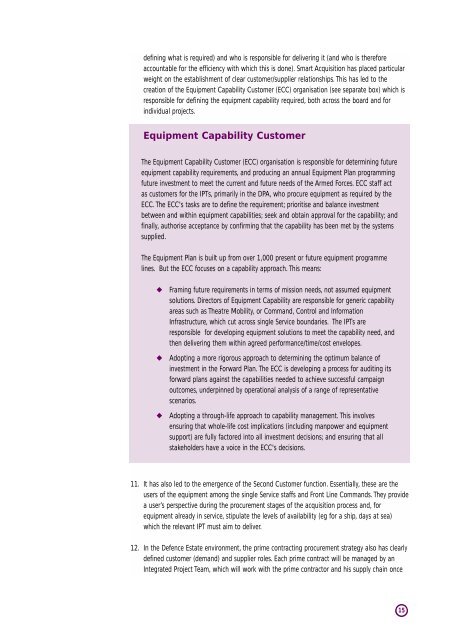
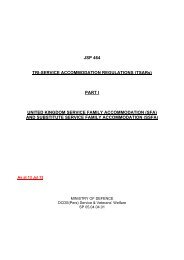
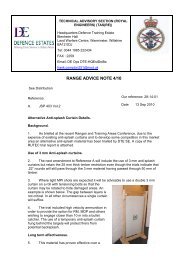

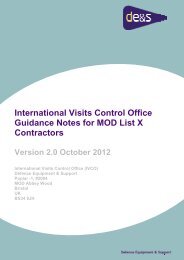

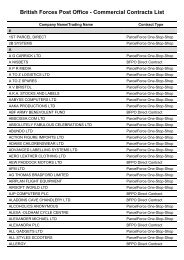



![MAA Regulatory Publications - FAQs PDF [37.3 KB]](https://img.yumpu.com/5906104/1/184x260/maa-regulatory-publications-faqs-pdf-373-kb.jpg?quality=85)
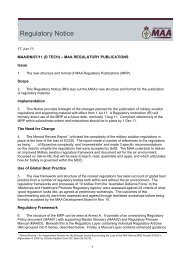
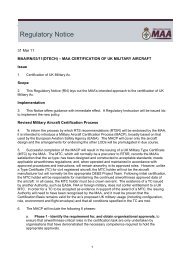
![3750 edition 6 PDF [263.5 KB] - Ministry of Defence](https://img.yumpu.com/5901071/1/184x260/3750-edition-6-pdf-2635-kb-ministry-of-defence.jpg?quality=85)

